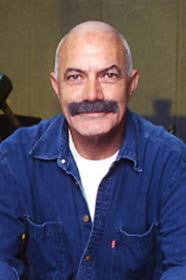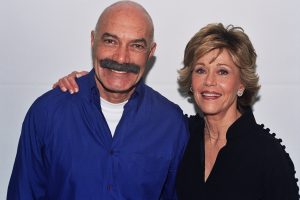The Searchers is considered to be by many critics one of John Ford’s undisputable masterpieces.
For the noted Village Voice reviewer Andrew Sarris, The Searchers is timelessly sublime, Ford’s monumental masterpiece as well as an auto-critique of a peculiarly American madness and presumption that haunt us to this day.
At least four elements of “The Searchers” explain its long-lasting effects: The exploration of a major and still timely problem of racism; Ethan Edwards as a quintessentially American hero; the film’s visual style as summation of Ford’s rich oeuvre; and John Wayne’s most complex performance.
To be sure, The Searchers is not a politically correct Western, but it’s still a poetically profound one. Placed in the context of the mid-1950s, the movie is not so much a plea for racial tolerance as examination of the roots of racism in the fabric of American history, and the very assumption of legitimate use of violence against alien or different people.
The film not only puts our political culture to a test of tolerance, but also shows deep doubt that it would pass that test. “The Searchers” raises disturbing questions about the psychosexual and political roots of racism in the American experience. And what the film says about Native Americans could easily apply to other racial minorities, including blacks and Jews. Ford shows, as the scholar Richard Combs noted, that American male heroism has a demonic side that includes exclusionary racial hatred so intense and thorough that it’s destructive to both the white and Indian commanders when the code is violated.
The economy of expression that Ford had achieved in 50 years of filmmaking constitutes the beauty of his style in “The Searchers.” The film is rich in the colors and textures of the seasons, from the whiteness of the winter snows to the brownness of summer sands.
Bogdanovich on John Wayne
John Wayne’s standing as a performer has enjoys greater prestige among the young generation of directors than among film critics.
Peter Bogdanovich, the critic-turned filmmaker, named four of Wayne movies among his ten all-time favorites: Red River ranked fourth, She Wore a Yellow Ribbon fifth, The Searchers sixth, and Rio Bravo ninth; Rio Bravo features, in his view, “Wayne’s most endearing performance.”
Bogdanovich notes that none of these pictures was recognized at the time as more than “and John Wayne does his usual job.” He feels that the critics unjustifiably panned many of Wayne’s roles, and that the quality that stars like Wayne (and Jimmy Stewart) bring with them is “unfortunately an achievement that normally goes unnoticed.” Unlike many of his colleagues at the time, Bogdanovich thinks that, “John Wayne is at his best precisely when he is being what we have to call John Wayne.”
Many critics see in Bogdanovich’s best film, The Last Picture Show” (1971), an explicit tribute to the work of John Ford and Howard Hawks. To begin with, the film is shot in black and white, which fits its ambiance of despair and stagnation, but was also influenced by Hawks’ cinematography. And for the last picture that the town’s only theater shows, Bogdanovich chose “Red River”; we see on the screen the scene in which Wayne calls the start of the cattle drive. Bogdanovich had a life dream to cast Wayne and Stewart in a Western, but it never materialized.
But if “Stagecoach” and “Red River” have managed to attain a classic status as great Westerns, “The Searchers” has become a cult movie, perhaps a reaction to the under-rated critical response when it was first released, in 1956.
Andrew Sarris on Ford and Wayne
Over the past three decades, The Searchers has gained the respect of numerous critics and filmmakers. A poll of international critics found that a majority cited the movie as one of their all-time favorite. Two of the Village Voice reviewers cited The Searchers as one of their ten favorite films. Andrew Sarris ranked the film fourth, preceded by Welles’s The Magnificent Ambersons, Murnau’s Sunrise, and Hitchcock’s Vertigo.
And Tom Allen placed the film at the head of his list, followed by Vertigo and another Wayne film, Hatari!
In the 1972 survey of Sight and Sound, several of Wayne movies were mentioned among the best films of all times, but The Searchers was the most frequent choice.
Jean-Luc Godard on Wayne
Mention has been made of the popularity of Ford and Hawks Westerns in France. Jean-Luc Godard, a leader of the French New Wave and one of the most experimental filmmakers, whose leftist politics were diametrically opposed to Wayne’s wondered: “How can I hate McNamara and adore Sergeant La Terreur, hate John Wayne upholding Goldwater and love John Wayne tenderly when abruptly he takes Natalie Wood into his arms in The Searchers.”
That scene is often cited as one of the most memorable and touching in film history! Another noted French director, Francois Truffaut, liked The Searchers, but he also admired Rio Lobo, which neither Hawks nor Wayne liked, as one of the ten movies in the 1970s he would like to see again, due to its “magistrate direction.”
Hollywood’s Young Directors
A whole generation of American directors was inspired by The Searchers, including Paul Schrader, John Milius, Martin Scorsese, Steven Spielberg, George Lucas, Michael Cimino.
By 1980, John Milius said he had watched the movie at least 60 times.
Scorsese and Paul Schrader cultivated the habit of revisiting Ford’s movie at least once or twice a year. Schrader, the critic-turned director-screenwriter, admitted that his scenario for “Hardcore” (1979) was virtually a reworking of “The Searchers” plot. George C. Scott plays the Wayne role, a father obsessed with finding and rescuing his teenage daughter from prostitution. The urban scene of New York’s pornographic world substitutes for the Comanche Indians. In the last reel of “Hardcore,” Schrader betrays his hero’s psychological makeup so that he can stage a climax that mimics “The Searchers.”
Spielberg had seen the film at least a dozen times, twice during the shoot of “Close Encounters of the Third Kind.” Spielberg also paid homage to Ford and Wayne in his blockbuster “E.T.: The Extra-Terrestrial” (1982). In a funny and moving scene, the creature from outer space is watching television and is aroused by the seduction scene between Wayne and Maureen O’Hara in “The Quiet Man.”
Spielberg later offered Wayne a role in his war comedy “1941,” which the star turned down.
Most of these directors have tried to incorporate elements and ideas and characters of The Searchers into their movies. The Searchers has inspired many directors and writers all of whom have acknowledge their great intellectual and cinematic debts to it. About a dozen American films, which are masterpieces in their own right, ranging from “Taxi Driver,” “Close Encounters of the Third Kind,” “The Deer Hunter,” have used the same narrative premise: an obsessed and obsessive young man searching for something, to which goal he is willing to sacrifice his body and soul.
Individual sequences, thematic ideas (revenge) and visual motifs of “The Searchers” have appeared in Clint Eastwood’s “Dirty Harry” movies, Sam Peckinpah’s “Ulzana’s Raid,” “The Wind and the Lion,” “Dillinger,” Sergio Leone’s “Once Upon a Time in the West,” and George Lucas’ “Star Wars” film series.
Critics and directors continue to be intrigued by “The Searchers” morally complex story. The film’s denouement and its implications on racism has understandably led to a sharply divided response, between what could be called the pessimists and optimists. According to one optimist reader, Jim Beaver: “It is Ford’s recognition and expert depiction of this ability of man to overcome even his worst nature that makes ‘The Searchers’ a great film.” Others think that the movie is never able to reconcile its ideological cracks and that its very contradictions and ambiguities are the reasons for endlessly revisiting and reevaluating the film.
Inspired by or Homages to The Searchers
After Hours
Close Encounters of the Third Kind
Django Unchained
The Emerlad Forest
E.T.
Hardcore
The Lion King
Mona Lisa
Paris, Texas
Star Wars film series
Taxi Driver
Ulee’s Gold










